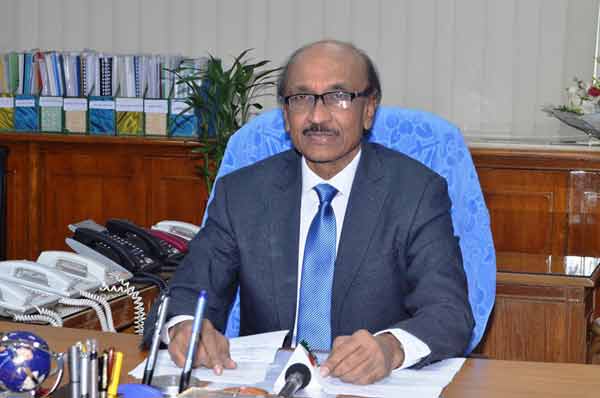

Bangladesh Bank governor Fazle Kabir. File photo
Dhaka, Bangladesh (BBN)- Inflationary pressures on Bangladesh economy may intensify in the coming months as the central bank has increased the money supply target for the second-half (H2) of this fiscal year.
The central bank of Bangladesh set a 13 per cent growth of broad money for the fiscal year (FY), 2019-20, up from its July target of 12.50 percent, according to the revised monetary programme, announced by the Bangladesh Bank (BB), on Sunday.
Actually, the BB was forced to enhance the target of broad money supply to the market to meet the government’s growing borrowing demand from banking sources. Broad money is a category for measuring the amount of money circulating in an economy.
The government has already crossed its annual limit for bank borrowing in the first half of FY’20 due to poor revenue collection along with lower sales of the national savings instruments in the recent months.
Between July and December last year, the government borrowed BDT 480.15 billion from the banking system against the annual target of BDT 473.63 billion, the BB’s latest data showed.
The BB has also revised up monetary target for the public sector credit growth for the FY ’20 amid a rising government borrowing from the banking system.
The growth of net government or public borrowing had been set at 24.20 per cent for H1 and 24.30 per cent for H2 when the monetary policy statement for FY20 had been issued in July last.
After the revision, the net government credit growth has been set at 37.70 per cent for H2.
As a result, the target of domestic credit growth has also been re-fixed at 17.40 per cent for the January-June period of the current fiscal year against 15.90 per cent set earlier.
On the other hand, the central bank kept unchanged the private sector credit growth at 14.8 percent, which is way higher than the 10 per cent it projected in December.
The central bank earlier decided to issue its monetary policy statement annually, a shift from its decade-long practice of half-yearly policy measure.
But in a reversal of the decision, it has now issued a press statement to announce the latest stance, adopted by the monetary policy committee, for the H2 in brief.
Presided over by BB governor Fazle Kabir, the meeting also expressed optimism that the previously-projected 8.20 per cent growth of gross domestic product (GDP) would be achievable in the current fiscal year.
The meeting, however, observed that keeping the consumer price inflation rate within 5.50 per cent by the end of the fiscal year may be challenging.
"Though it will be challenging to keep inflation at the targeted 5.5 percent amid rising edible oil prices on the international market and other necessary goods on the local market, increased supply of goods would help the central bank to keep the inflation rate near to the target by the end of FY ’20," the BB said in the statement on Sunday.
Inflation has been rising in recent months and already reached an average of 5.59 per cent in December, 2019, crossing the monetary policy statement (MPS) target, according to the Bangladesh Bureau of Statistics (BBS).
The decision to increase the money supply has been taken without bringing any change in the policy rates and to improve supply to the private sector including capital market, the statement added.
The meeting also observed that due to 2.0 per cent incentives on remittance, the inflows would be buoyant in the current fiscal year.
The central bank was of the view that reduction in rate of lending from export development funds by 100-basis points would also help post positive growth in export earnings by the end of the fiscal year.
Exports declined by 5.84 per cent in the first half of the current fiscal year.
The flow of inward remittance hit an all-time high of $18.32 billion in 2019, much to the relief of the government that has been on edge for the lower foreign exchange earnings from declining export shipments.
The ongoing trade war between the US and China and the recent spates of political unrest in the Middle East have mainly put Bangladesh’s export sector under pressure.
However, the government may face hurdles in achieving the GDP growth by the end of FY ’20 as remittance does not have direct impact on economic expansion.
It also mentioned that due to increase in foreign borrowing by the government to finance mega projects as well as surge in foreign direct investment, there would be $410 million surplus in the country’s overall balance of payments by the end of FY ‘20.
BBN/SSR/AD